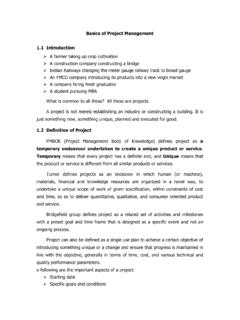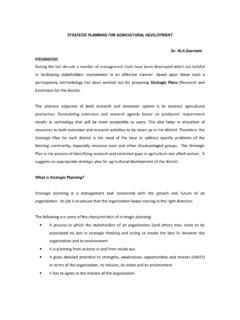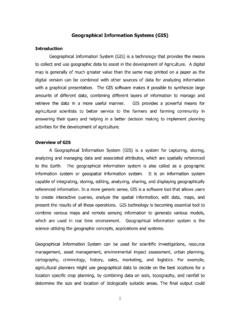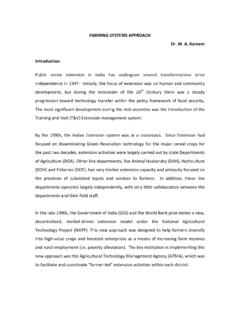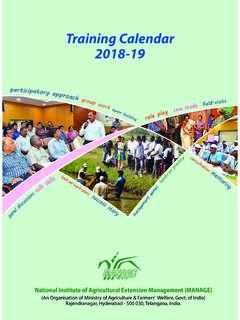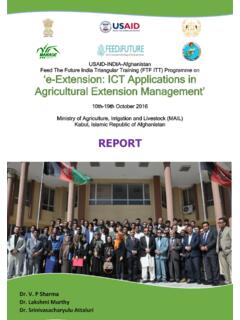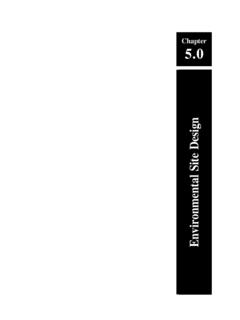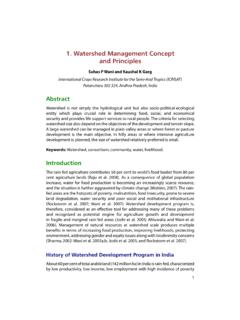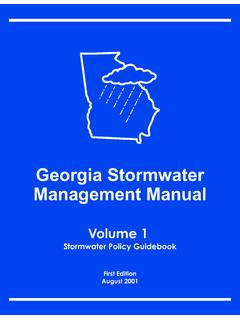Transcription of 1. Introduction to Project Management
1 1. Introduction to Project Management Introduction Realization of these objectives requires systematic planning and careful implementation. To this effect, application of knowledge, skill, tools and techniques in the Project environment, refers to Project Management . Project Management in recent years has proliferated, reaching new heights of sophistication. It has emerged as a distinct area of Management practices to meet the challenges of new economic environment, globalization process, rapid technological advancement, and quality concerns of the stakeholders. Project Definition Project in general refers to a new endeavor with specific objective and varies so widely that it is very difficult to precisely define it.
2 Some of the commonly quoted definitions are as follows. Project is a temporary endeavor undertaken to create a unique product or service or result. (AMERICAN National Standard ANSI/PMI99-001-2004) Project is a unique process, consist of a set of coordinated and controlled activities with start and finish dates, undertaken to achieve an objective confirming to specific requirements, including the constraints of time cost and resource. (ISO10006) Examples of Project include Developing a watershed , Creating irrigation facility, Developing new variety of a crop, Developing new breed of an animal, Developing agro-processing centre, Construction of farm building, sting of a concentrated feed plant etc.
3 It may be noted that each of these projects differ in composition, type, scope, size and time. Project Characteristics Despite above diversities, projects share the following common characteristics. Unique in nature. Have definite objectives (goals) to achieve. Requires set of resources. Have a specific time frame for completion with a definite start and finish. Involves risk and uncertainty. Requires cross-functional teams and interdisciplinary approach. 2 Project Performance Dimensions Three major dimensions that define the Project performance are scope, time, and resource. These parameters are interrelated and interactive. The relationship generally represented as an equilateral triangle.
4 The relationship is shown in figure 1. It is evident that any change in any one of dimensions would affect the other. For example, if the scope is enlarged, Project would require more time for completion and the cost would also go up. If time is reduced the scope and cost would also be required to be reduced. Similarly any change in cost would be reflected in scope and time. Successful completion of the Project would require accomplishment of specified goals within scheduled time and budget. In recent years a forth dimension, stakeholder satisfaction, is added to the Project . However, the other school of Management argues that this dimension is an inherent part of the scope of the Project that defines the specifications to which the Project is required to be implemented.
5 Thus the performance of a Project is measured by the degree to which these three parameters (scope, time and cost) are achieved. Mathematically Performance = f(Scope, Cost, Time) In Management literature, this equilateral triangle is also referred as the Quality triangle of the Project . Project Life Cycle Every Project , from conception to completion, passes through various phases of a life cycle synonym to life cycle of living beings. There is no universal consensus on the number of phases in a Project cycle. An understanding of the life cycle is important to successful completion of the Project as it facilitates to understand the logical sequence of events in the continuum of progress from start to finish.
6 Typical Project consists of four phases- Conceptualization, Planning, Scope Cost Time Figure 1. Project performance dimensions 3 Execution and Termination. Each phase is marked by one or more deliverables such as Concept note, Feasibility report, Implementation Plan, HRD plan, Resource allocation plan, Evaluation report etc. Conceptualization Phase Conception phase, starting with the seed of an idea, it covers identification of the product / service, Pre-feasibility, Feasibility studies and Appraisal and Approval. The Project idea is conceptualized with initial considerations of all possible alternatives for achieving the Project objectives.
7 As the idea becomes established a proposal is developed setting out rationale, method, estimated costs, benefits and other details for appraisal of the stakeholders. After reaching a broad consensus on the proposal the feasibility dimensions are analyzed in detail. Planning Phase In this phase the Project structure is planned based on Project appraisal and approvals. Detailed plans for activity, finance, and resources are developed and integrated to the quality parameters. In the process major tasks need to be performed in this phase are Identification of activities and their sequencing Time frame for execution Estimation and budgeting Staffing A Detailed Project Report (DPR) specifying various aspects of the Project is finalized to facilitate execution in this phase.
8 Execution Phase This phase of the Project witnesses the concentrated activity where the plans are put into operation. Each activity is monitored, controlled and coordinated to achieve Project objectives. Important activities in this phase are Communicating with stakeholders Reviewing progress Monitoring cost and time Controlling quality Managing changes 4 Termination Phase This phase marks the completion of the Project wherein the agreed deliverables are installed and Project is put in to operation with arrangements for follow-up and evaluation. Life Cycle path The life cycle of a Project from start to completion follows either a S shaped path or a J shaped path (Figure 2 and 3).
9 In S shape path the progress is slow at the starting and terminal phase and is fast in the implementation phase. For example, implementation of watershed Project . At the beginning detailed sectoral planning and coordination among various implementing agencies etc. makes progress slow and similarly towards termination, creating institutional arrangement for transfer and maintenance of assets to the stakeholders progresses slowly. Error! In J type cycle path the progress in beginning is slow and as the time moves on the progress of the Project improves at fast rate. Example, in a developing an energy plantation.
10 In this the land preparation progresses slowly and as soon as the land and seedling are transplantation is under taken. This is shown in figure 3. Percentage completion 100 Slow start Quick Momentum Slow finish Time Figure 2. Project life path S shape 5 Error! Project Classification There is no standard classification of the projects. However considering Project goals, these can be classified into two broad groups, industrial and developmental. Each of these groups can be further classified considering nature of work (repetitive, non-repetitive), completion time (long term, shot term etc), cost (large, small, etc.), level of risk (high, low, no-risk), mode of operation ( build, build-operate-transfer etc).
